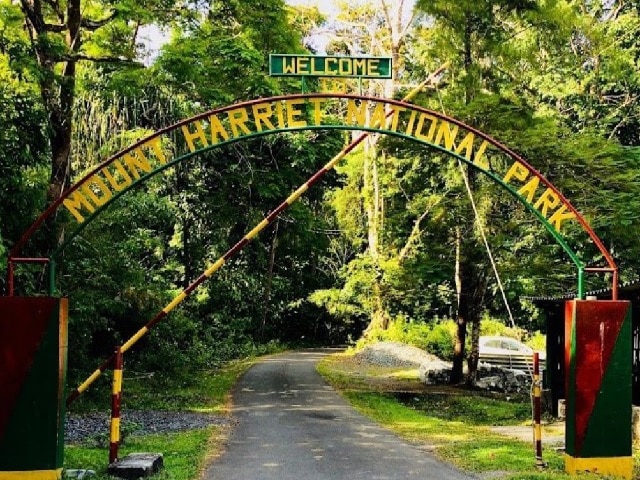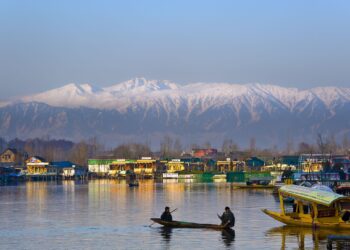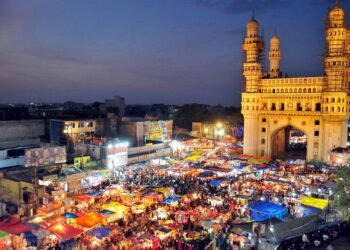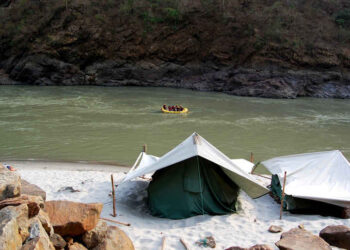Mount Harriet, a historical tourist attraction in the Andaman and Nicobar Islands, was renamed Mount Manipur by the Union government on Sunday. The announcement came during Union Home Minister Amit Shah’s visit to Port Blair, when he praised the Northeastern state’s “important contribution” in battling the British, particularly during the 1891 Anglo-Manipur war. Manipur will hold elections in 2022.
What does Manipur have to do with Mount Harriet?
Several Manipuris who battled the British in the Anglo-Manipur War of 1891, notably Maharaja Kulachandra Dhwaja Singh, were deported to the British prison colony in the Andaman Islands. Kulachandra and the inmates were confined atop Mount Harriet, a mountain in what is now the Ferragunj tehsil of the South Andaman district because the cellular jail (Kalapani) had not yet been erected.
According to a British-era record from the Manipur State Archives, 23 persons were “transported for life” to the Andaman’s, including King Kulachandra and his brothers. While others perished there, Kulachandra was released and relocated before dying.

According to Wangam Somorjit, an Imphal-based historian who specializes in the conflict, In Manipur, the 23 are revered as war heroes. Mount Harriet is a significant emblem of the 1891 Anglo-Manipur War,
What triggered the Anglo-Manipur War in 1891, and why is it important?
The Anglo-Manipur War, which lasted a month in 1891 and is considered a watershed moment in Manipur’s history, was fought between the kingdom of Manipur and the British.
A coup in Manipur’s palace, which had been plagued by internal factionalism in the years leading up to 1891, sparked the fight. The British government took advantage of “internal strife” among the princes of the royal line, according to the Manipur State Archives website.
Surchandra acquired the throne from his father Chandrakirti Singh in 1886. Manipur was not under British administration at the time but had treaties with the British crown.
Surchandra’s accession to the throne, on the other hand, was contentious, and his younger brothers — Kulachadra and Tikendrajit — revolted against him.
The 1890 coup by the dissident faction removed Surchandra and proclaimed Kulachandra, the next oldest brother, king, according to an essay authored by Wangam and Imphal-based curator and author, Somi Roy and published on the Penguin India website. Surchandra fled to Calcutta, hoping for British assistance in getting him reinstated.
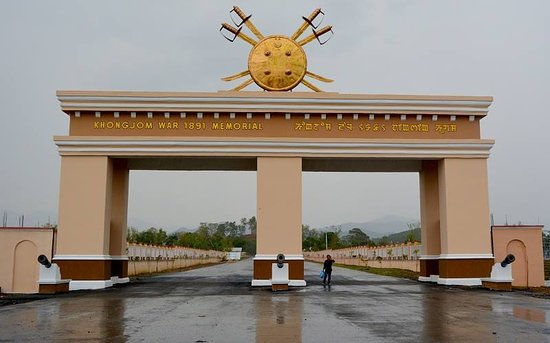
“Instead, the British sent an army to Manipur, led by James Quinton, the Chief Commissioner of Assam.” His purpose was to recognize Kulachandra, as king on the condition that Crown Prince Tikendrajit, the coup leader, be arrested and deported from Manipur.
The king opposed this intrusive imposition of British law in a sovereign state, causing the Anglo-Manipuri War of 1891.” Wangam and Roy collaborated on the project.
The British surrendered early in the war, and its leaders, including Quinton, were publicly executed. The British invaded Manipur from three directions in the second phase, eventually capturing the Kangla Fort in Imphal. The British hanged Prince Tikendrajit and four others, while Kulachandra and 22 others were sent to the Andaman Islands.
Many people believe the conflict was a “blow to British prestige.” Despite their success, five prominent officers had been killed. It was seen in India as part of a larger movement against British rule that began shortly after the Revolt of 1857.
Manipur became a princely state under the indirect administration of the British crown after the war.
Why is it regarded as a lost chapter?
Historians in Manipur claim there isn’t much knowledge on the war, particularly about the deported captives. “The narrative altered significantly once the British took over, and there was minimal documentation of such occurrences,” Wangam added.
Two delegations from the All Manipur Working Journalists Union (AMWJU) visited Mount Harriet in February 2003 and February 2013 to “learn more” about the detainees. Based on some data available, AMWJU’s Vice President at the time, A Mubi, said they were able to confirm that Kulachandra was housed in Mt Harriet.
Ng Uttam, the director of Manipur Art and Culture, said the state was in talks with the Andaman and Nicobar authorities about allocating a place for a memorial to the war heroes.
While authorities agreed to give an area near the cellular jail in 2019, the epidemic caused the procedure to be postponed. The Manipur government inaugurated a monolith in Imphal in honour of the “unsung war heroes” just before Independence Day in 2021.
The renaming of Mount Harriet to Mount Manipur, according to Uttam, was long overdue and a worthy honour to the banished heroes.
But who was Mount Harriet named after in the first place?
Mount Harriet, the third-highest mountain in the Andaman and Nicobar Islands, served as the Chief Commissioner’s summer headquarters during the British Raj.
It is thought to be named after Harriet Christina Tytler, a British artist and photographer who was the wife of Robert Christopher Tytler, a soldier in the British Indian Army. Tytler was the superintendent of the prison colony at Port Blair from 1862 to 1864.
Mount Harriet, according to South Andaman district officials, is home to a colonial villa that currently serves as a forest guest lodge. The Mount Harriet National Park, which is recognized for its diverse bird population, is close by.
Also Checkout: Mercy In The Month Of Ramadan And Nine Blessed Nights of Navratri: Token of Peace and Harmony For People Of India


